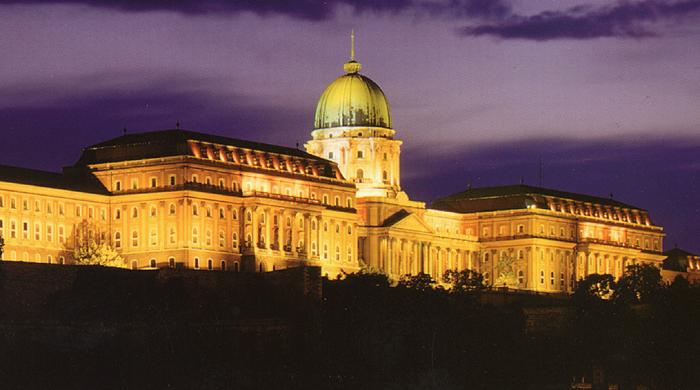
Budapest’s Castle District is packed with historic sights and attractions (the Royal Palace, the Matthias Church, medieval houses), interesting museums, charming, crooked streets following the shape of the hill, as well as some good cafés and restaurants. Besides the monuments, you get a breathtaking panorama of the Danube with the Chain Bridge and the Pest side of the city on the opposite side of the river. Everything at one place! It’s ideal to spend a romantic morning here in spring or on a sunny autumn day, before the tourists overrun the hill. Buda Castle and its many courtyards host several festivals and events all over the year including an international wine festival, a beer festival, and a folk art festival.
As private cars are not allowed to enter the zone, your only options remain public transport, walking or taxi. Szell Kalman ter, Buda's main transport hub (station M2), makes the most convenient entry point to the Castle District. You can walk upon the hill (it takes about 20 minutes) or take the bus 16 or 16A. When you come up from the subway station look for the outdoor stairway leading to a pedestrian bridge over the trolley tracks. Up the steps, over the tracks, cross the street to the mid-block bus stop. It's also pleasant to walk by Chain Bridge (Széchenyi Lánchíd) from Pest and walk up by the narrow streets or paths (as Király lépcső or Kemál Atatürk sétány). Walking from Pest is likely to be faster than public transport or taxi on peak hours. The spectacular but very touristy and pricey cable car (funicular) called Budavári Sikló (HUF 900/1500 one way/return, children HUF 550/1000) climbs up Castle Hill from Chain Bridge's Buda side to Fisherman's Bastion (Halászbástya). As the cable car is rising up the hill you get a beautiful view of Pest across the river. Alternatively you can check the view from one of the two small pedestrian bridges over the cable car way - for free.
Buda Castle WebsiteHouse of Terror is a museum located at Andrássy út 60 in Budapest, Hungary. It contains exhibits related to the fascist and communist dictatorial regimes in 20th-century Hungary and is also a memorial to the victims of these regimes, including those detained, interrogated, tortured or killed in the building. With regard to communism and fascism, the exhibition contains material on the nation's relationships to Nazi Germany and the Soviet Union. It also contains exhibits related to Hungarian organisations such as the fascist Arrow Cross Party and the communist ÁVH (which was similar to the Soviet Union KGB secret police). Part of the exhibition takes visitors to the basement, where they can see examples of the cells that the ÁVH used to break the will of their prisoners. Much of the information and the exhibits is in Hungarian, although each room has an extensive information sheet in both English and Hungarian. Audio guides in English and German are also available. Full ticket prices are 2000 HUF and discounted student tickets are 1000HUF.
House of Terror WebsiteThe Hungarian Parliament Building, which translates to House of the Country or House of the Nation) is the seat of the National Assembly of Hungary, one of Europe's oldest legislative buildings, a notable landmark of Hungary and a popular tourist destination of Budapest. It lies in Lajos Kossuth Square, on the bank of the Danube. It is currently the largest building in Hungary and still the tallest building in Budapest.
The Parliament Building is in the Gothic Revival style; it has a symmetrical facade and a central dome. The dome is Renaissance Revival architecture. Also from inside the parliament is symmetrical and thus has two absolutely identical parliament halls out of which one is used for the politics, the other one is used for guided tours. The main façade faces the River Danube, but the official main entrance is from the square in front of the building. Inside and outside, there are altogether 242 sculptures on the walls. When entering the Parliament, visitors can walk up great ornamental stairs, see frescoes on the ceiling and pass by the bust of the creator, Imre Steindl, in a wall niche. Other statues include those of Árpád, Stephen I and John Hunyadi. One of the famous parts of the building is the hexadecagonal (sixteen-sided) central hall, with huge chambers adjoining it: the Lower House and the Upper House. The modern National Assembly is unicameral and meets in the Lower House, while the Upper House is used as a conference and meeting room. The Holy Crown of Hungary, which is also depicted in the coat of arms of Hungary, has been displayed in the central hall since 2000.
Adult tickets for non-EU citizens is 3500HUF and adult tickets for EU citizens are half that price at 1750HUF. The parliament has free admission on November 1st for the All Saints Day public holiday.
Parliament WebsiteSt. Stephen's Basilica is a Roman Catholic basilica in Budapest, Hungary. It is named in honour of Stephen, the first King of Hungary (c 975–1038), whose right hand is housed in the reliquary. It was the sixth largest church building in Hungary before 1920. Today, it is the third largest church building in present-day Hungary.
The Saint Stephen Basilica has played an active role in the musical community since its consecration in 1905. The head organists of the church have always been very highly regarded musicians. In the past century the Basilica has been home to choral music, classical music as well as contemporary musical performances. The Basilica choir performs often in different parts of Europe as well as at home. In the summer months they perform every Sunday. During these months you can see performances from many distinguished Hungarian and foreign organ players alike.
Guided tours of the Basilica are also available Monday through Friday between 10 am and 3 pm, for a fee of 2000HUF.
St. Stephen's Basilica Website